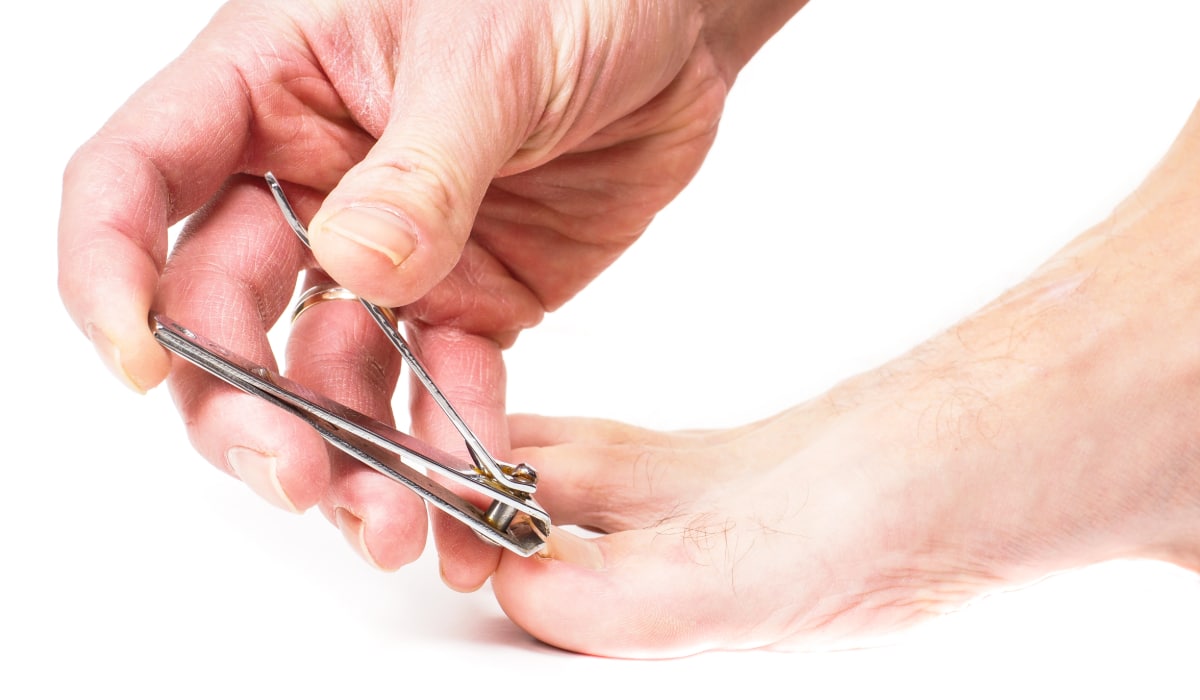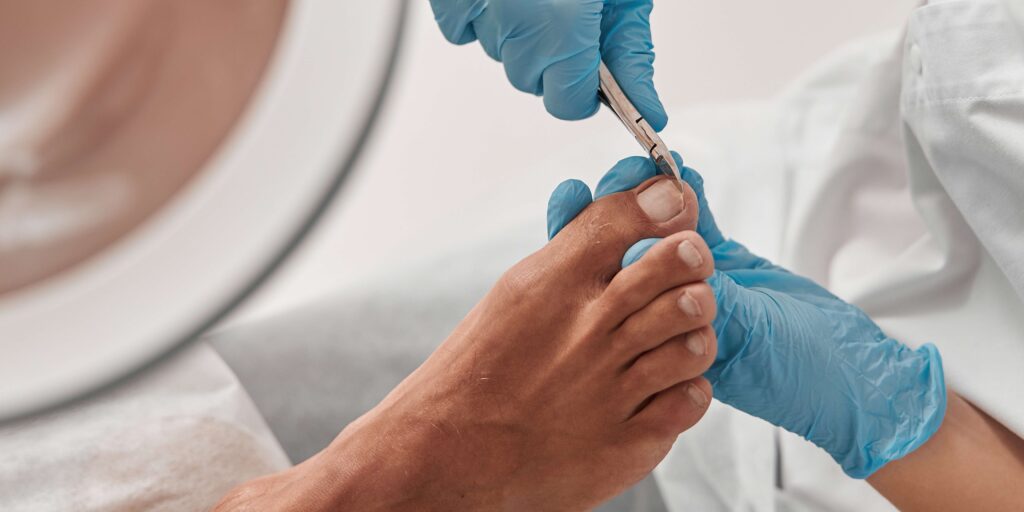If you’ve ever dealt with an ingrown toenail, chances are you’ve heard plenty of home remedies—some helpful, others not so much. From vinegar soaks to trimming a “V” into the nail, there’s no shortage of advice floating around. Unfortunately, many of these common suggestions are outdated, ineffective, or even harmful.
Before diving into any at-home fix, it’s essential to understand the severity of your condition and consider any underlying risk factors. Not all ingrown toenails can—or should—be handled at home.

How to Tell If Your Ingrown Toenail Needs More Than Home Care
Not every ingrown toenail is created equal. A proper severity assessment can help you determine whether home treatment is safe or if it’s time to contact our skilled podiatrist. Here’s what to look for:
- Pain Level: Mild tenderness may be manageable at home. But if you’re experiencing sharp, throbbing, or persistent pain, don’t ignore it.
- Infection Signs: Redness, swelling, pus, warmth, or streaking around the toe are signs of infection that need medical care.
- Health Conditions: People with diabetes, neuropathy, or poor circulation should skip home remedies and see a doctor right away.
- No Progress: If your symptoms aren’t improving after a few days of conservative care, professional treatment is likely needed.
- Repeat Problems: If ingrown toenails keep coming back, there may be a structural issue that needs to be addressed professionally.
- Convenience and Comfort: Sometimes, even a mild case just isn’t worth the hassle or discomfort of trying to manage it yourself.
Can You Safely Treat an Ingrown Toenail at Home?
For minor cases and otherwise healthy individuals, there are conservative treatment options you can try at home. That said, they come with limitations. Home care can provide short-term relief but isn’t always a long-term fix, especially if the root cause isn’t addressed.
Safe Steps for At-Home Ingrown Toenail Care
If your symptoms are mild and you have no underlying health risks, here are some safe home care steps you can take:
- Choose Roomier Shoes: Tight footwear can make things worse. Switch to sandals or shoes with a wide toe box to relieve pressure on the affected toe.
- Soak Your Foot: Soak your foot in warm water for 15–20 minutes a few times a day. This softens the skin and nails, easing discomfort and reducing inflammation.
- Gently Lift the Nail: After soaking, use a clean piece of dental floss or cotton to carefully lift the nail edge from the skin. Never force it.
- Apply an Antibiotic Cream: To prevent infection, use an over-the-counter antibiotic ointment and keep the toe clean and bandaged.
Keep in mind: these measures are temporary. If your condition doesn’t improve, stop home treatment and call our podiatrist.
What NOT to Do: Harmful At-Home Practices
Unfortunately, some commonly recommended at-home tactics can do more harm than good. Here’s what to avoid:
- Digging or Cutting the Nail Edge: Trying to “fix” the nail yourself can lead to increased pain, infection, or permanent damage.
- DIY Nail Removal Techniques: Cutting a notch in the center of the nail or trimming down the sides often worsens the problem rather than solving it.
These unsafe practices not only delay proper healing, they can also lead to serious complications.
Why Professional Treatment Makes a Difference
When home remedies don’t work—or when the toenail is infected, painful, or recurring—professional treatment is the safest and most effective option. At our office, ingrown toenail procedures are quick, precise, and designed to relieve pain with minimal disruption to your day.
Here’s what professional care may include:
- Numbing the Area: Local anesthesia ensures a pain-free experience.
- Removing the Offending Nail Border: Only the portion of the nail causing trouble is removed.
- Optional Matrix Removal: For chronic cases, the nail root (matrix) may be treated to prevent future ingrowth.
These procedures are typically completed in one short office visit and provide almost immediate relief. This will only lead to more pain and a significantly increased risk of infection.

The Clear Benefits of Seeing Our Podiatrist
Choosing a podiatrist for ingrown toenail care comes with several advantages:
- Fast Results: Relief is often immediate.
- Safe and Sterile: Reduces the risk of infection or complications.
- Little to No Pain: Local anesthesia and expert care make the procedure easy.
- Minimal Downtime: Most patients resume normal activities the same day.
- Long-Term Fix: Matrix treatment can stop the problem from returning altogether.
When caught early, ingrown toenails are easily treatable. Delaying care can lead to avoidable complications.
Take the Next Step Toward Healthy, Pain-Free Feet
Ingrown toenails may seem minor at first, but they can quickly become painful or infected if not properly treated. While home treatment can help with mild cases, it’s important to recognize when the situation requires professional care.
Your foot health should never take a back seat. If you’re unsure how severe your condition is or if your symptoms aren’t improving, don’t hesitate to reach out. Early care is always the best care.
Call our Berkeley office today at (510) 647-3744 or contact us online to schedule an appointment and get the expert help your feet deserve.
